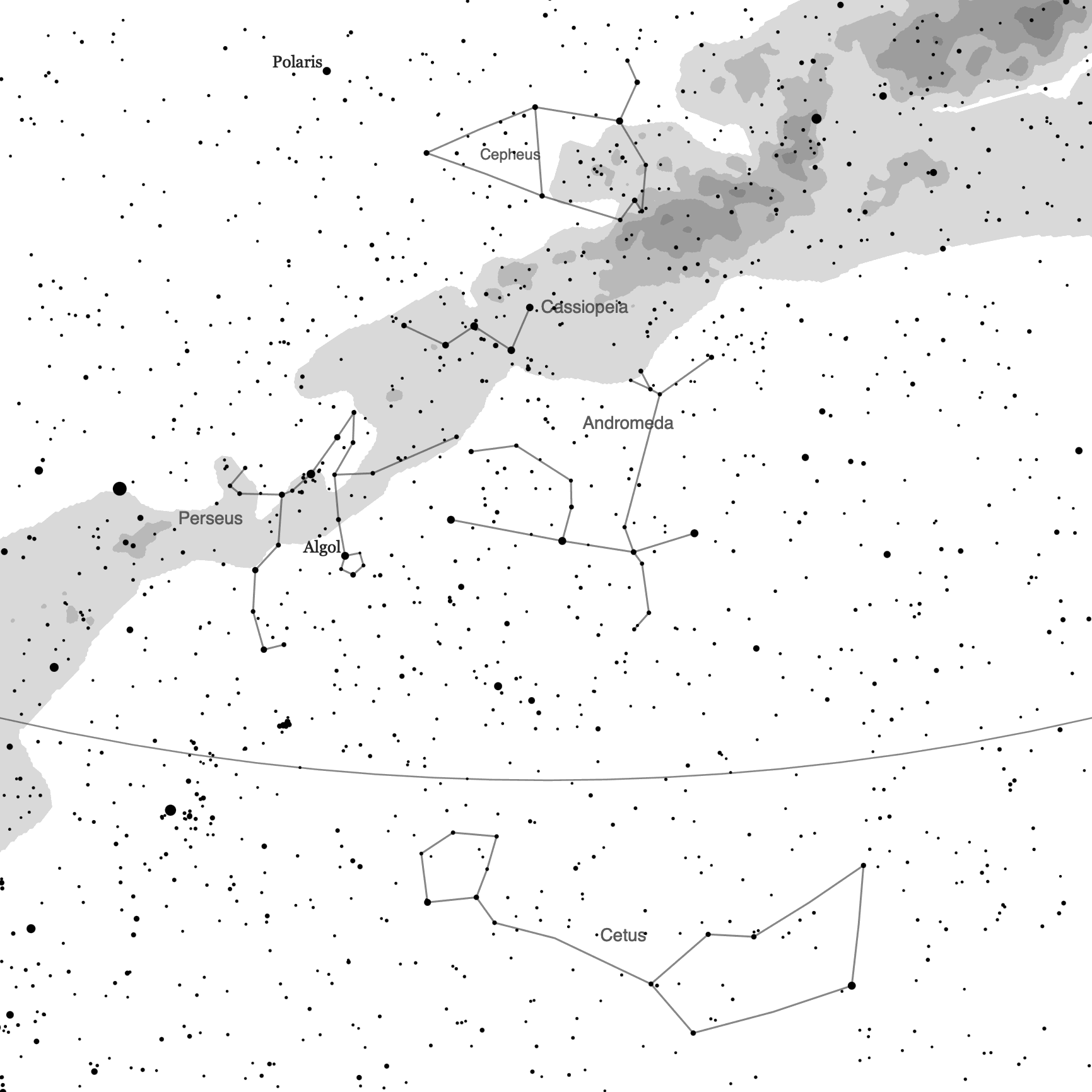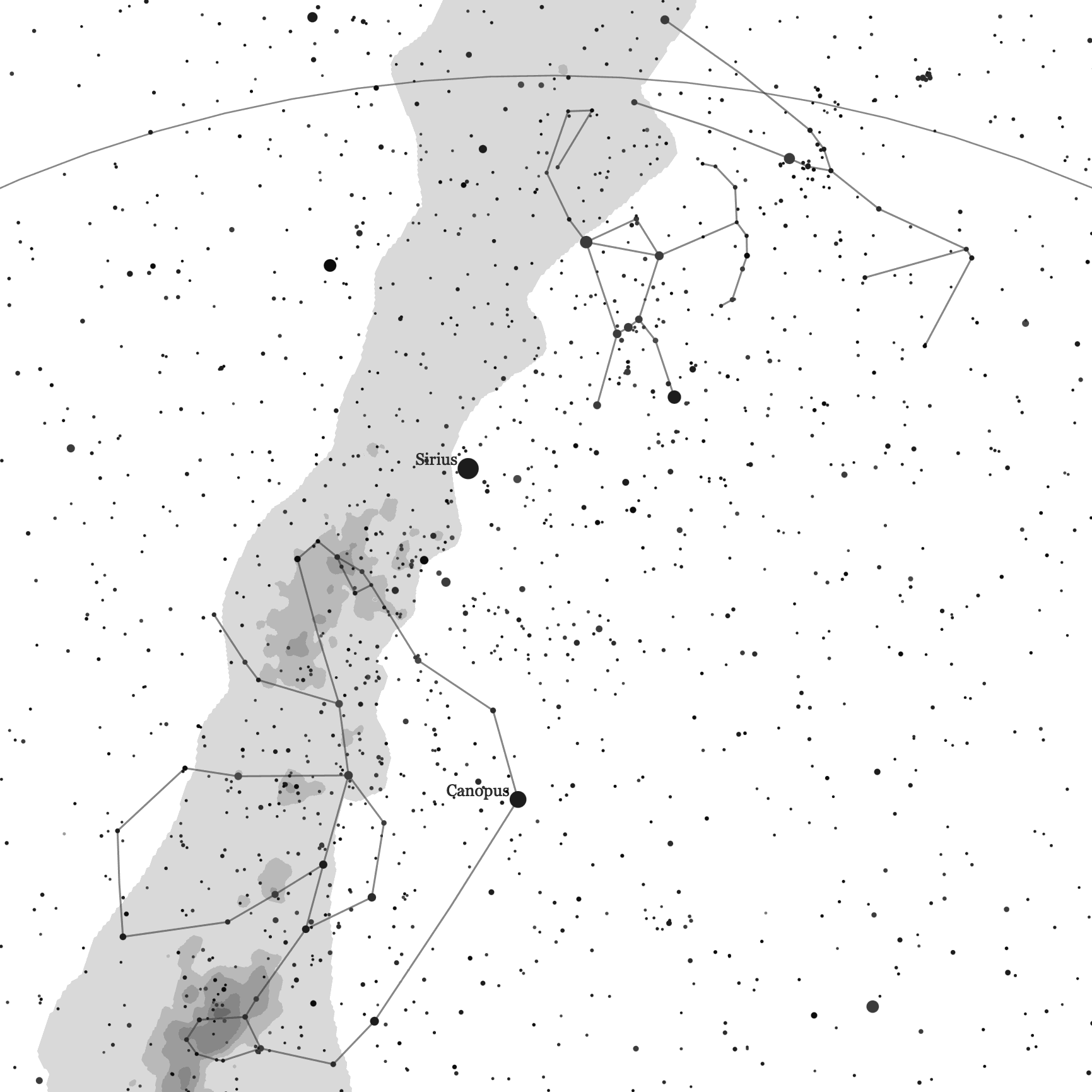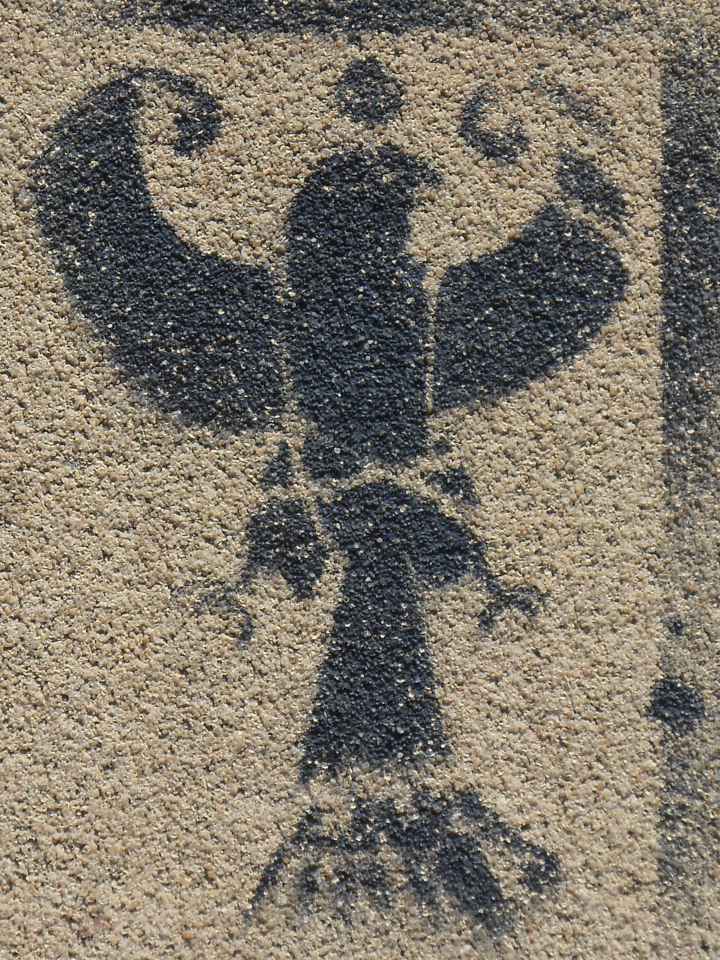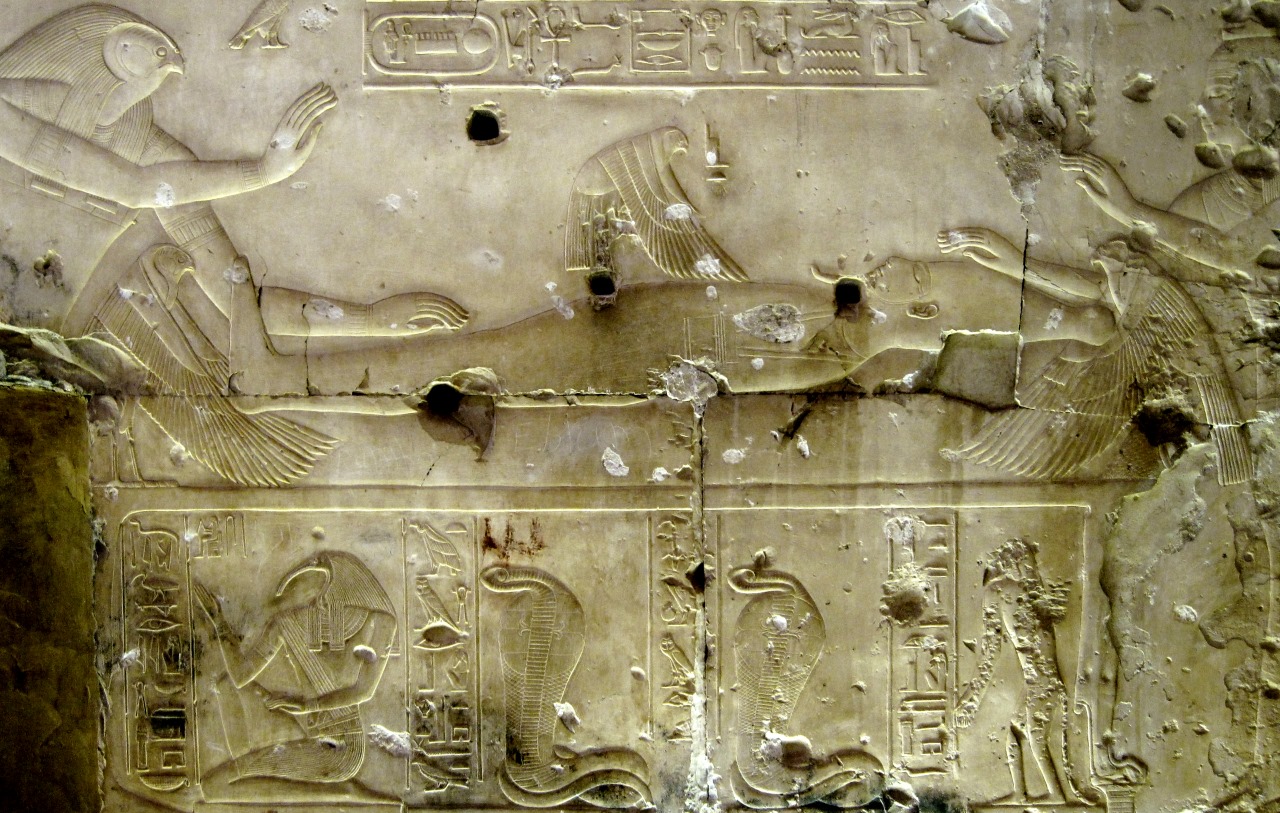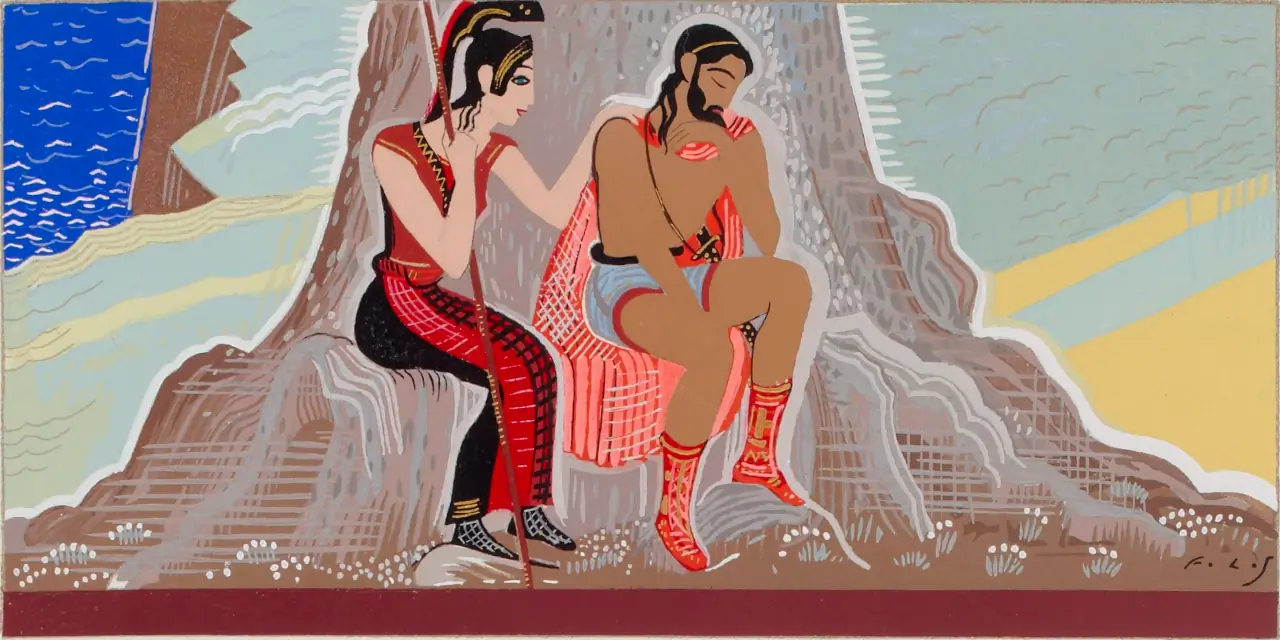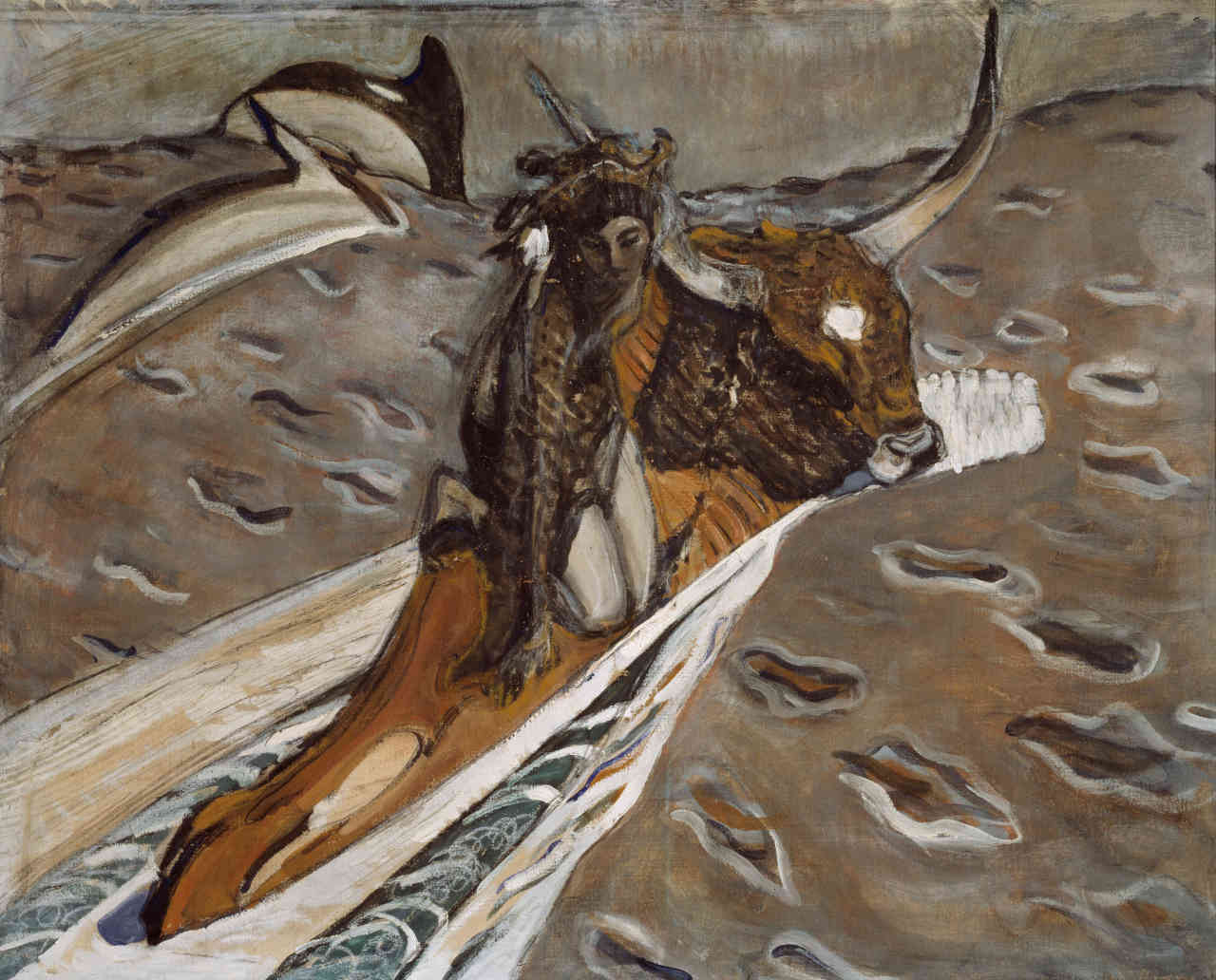I think I've found the mistake that I've been making: I've been mixing and matching my myths up! I have noted that the Horos-myth concerns growing up and gaining one's inheritance, while the Greek myths concern exile-and-return, but I'm starting to think that these are not two different takes on the same idea; rather, I think they're two different myths and I have been conflating them.
Let me start somewhere else and hopefully it'll become clear as we go. No less than Hesiod tells us that the Theban Wars and the Troian War are the two major events of the age of Heroes:
In the former, Europe was snatched away from Tyre to Crete, and her son Kadmos left Crete (simultaneously by choice and compulsion) to found Thebai, which was ruled by his descendents. Eventually, Thebai was besieged by the Seven, who failed (with six of the Seven dying), and the Epigone (their "offspring," including Diomedes and Eurualos), who successfully sacked the city ten years later, carrying Europe's magic necklace and robe and Manto away.
In the latter, Helene was snatched away from Argos to Troia (simultaneously by choice and compulsion) by Paris. The Danaans sent an envoy to Troia, and when that failed, they (including Diomedes and Eurualos) besieged it for ten years (during which many of their heroes died), eventually sacking the city and carrying Helene and Kassandra away.
Mythically speaking, though, these have the same meaning: the stories of both follow largely the same events, with the only meaningful difference between them being that individuals in the Troia myth are represented by bloodlines in the Thebai myth. We see a very similar story in the Theseus myth, too: the Athenian Youths are snatched away from Athens to the labyrinth (mostly unwillingly, though Theseus by choice). He enters the labyrinth, slays it's inhabitant, and carries the Athenian Youths and Ariadne away. (It is noteworthy that labyrinths are called "Troy-Towns" in England and Scandinavia to this day.)
These don't follow the pattern of the Horos myth, since Horos never leaves Egypt; instead, he avenges his father and claims his birthright. So if Horos represents one category of myth (the Hero-myth), I think the three above constitute a second one; let's call it the City-myth.
Now, I've been looking at a bunch of myths so far, and treating them all as following the Hero-myth model. But I think this is a miscategorization and causes problems (which is why I pulled my Hero Myth Rosetta Stone some weeks ago). The Perseus and Orestes myths clearly follow the Hero-myth model. The Odusseus myth does too, but only if we treat the Odyssey as self-contained, treating the Odusseus of the Iliad as a separate mythic character.
But Kore of the Persephone-myth isn't Horos, she's Europe! Just as Europe is beguiled by Zeus-as-a-bull and a crocus, Kore is beguiled by Hades (the "Khthonic Zeus") and a narcissus. Just as Helene is snatched away to the house of Paris, Kore is snatched away to the house of Hades. Here, though, the envoy from Olumpos (that is, Demeter and her attendants) manage to secure a truce rather than the house of Hades being destroyed. (That is, it covers the first half of the myth but not the last half.)
There's another City-myth I haven't discussed: the Aesir-Vanir War and Ragnarok. Here, Freyja goes (by choice?) to Asgard, the Vanir send an envoy, and the war ends in a truce with Freyja being held hostage by the Aesir. Then things settle for a long time before Asgard is eventually destroyed during Ragnarok (a second, separate war mostly involving the children of the first war, like with Thebai). Frustratingly, while there are tantalizing similarities (for example, Freyja has the Brisingamen and a magic cape, matching Europe's magic necklace and robe), what remains of the Asgard myth—or at least my understanding of it, from my light studies so far!—seems fragmentary...
Now, while I think these are separate myths, there is an interesting way these fit together. The first half of the Hero-myth (that is, concerning Osiris, Danae, etc.) matches the City-myth: beautiful and wonderful Osiris being Europe, Helene, the Athenian Youths, Kore, Freyja, etc., but the second half of the Horos-myth has nothing to do with it. Now, Thebai, Troia, the labyrinth, Asgard, etc. are all obviously the material world in which we live. Horos is born of Isis (in the material world), so if we're looking for a Horos-equivalent in the City-myth, we're looking for someone on the "side" of the city (rather than an invader) and who avoids it's destruction (since Horus is not present for any city's destruction). (That is, even though Homer treats the Danaans as the protagonists of his tale, we should be wary of them, since we are the Troians!) There was exactly one Troian hero who survived the sack of Troia: Aineias, son of Ankhises and Aphrodite, most pious of the Troians, called "hero" by Apollon himself, and most beloved by the gods. I think he's our Horos, and the parallel is made explicit by Dionusos of Halicarnassos, who tells us that Aineias's father warns him before Troia falls, causing him to withdraw to Ida; this is the direct correspondence with Osiris coming to Horos from Hades, and is the point at which the Hero-myth diverges from the City-myth: with the City going on to its destruction while Horos goes on to do something else.
There's two things interesting about Aineias. First, I've always considered Virgil's Aenead to be a second-rate knock-off of the Odyssey, but if I'm right and Aineias is Horos, then this makes sense, since the Odusseus of the Odyssey is also Horos, and thus they ought to tell the same myth. Second, I had been assuming that Baldr was the Germanic equivalent of Apollon or Horos, but Snorri Sturluson identifies Aineias as Víðarr, slayer of Fenrir and one of the only Aesir to survive Ragnarok, and who goes on to found a new city. Thus, presumably Víðarr is also Horos; and if (as Ploutarkhos says) that Seth is to be identified with the eclipse, then Fenrir (who gobbles up the Sun) is presumably Seth (or, more likely, one of his avatars, perhaps the red bull Horos fights).
In the same way, I assume Daidalos (successful) and Ikaros (cautionary) are the Horos-equivalents in the Theseus myth, literally taking on wings and leaving the labyrinth behind to its fate.
Please consider this a first-draft conjecture, there are many, many details that I have yet to chase down, but it resolves the discrepancies that caused me to need to rework my Hero Myth Rosetta Stone, which I will of course be working at as time permits.
It also carries with it the uncomfortable thought that Troia has not yet fallen: the material world is still here, the old gods are not yet dead. Hesiod is unclear on the end of the Heroic age and the beginning of the Iron age—they seem to blend together—but on the basis of his descriptions of the end of the Iron age, the Voluspa's descriptions of the prelude to Ragnarok, and of course my own theories that the old ways remain open (but probably not for much longer), the sack of Troia presumably comes soon. I urge to you to keep a weather eye out for Troian horses and to heed the warning of Laocoon which prompted Ankhises and Aineias to flee:
Timeō Danaōs et dōna ferentēs.
I fear the Danaans, even those bearing gifts.
